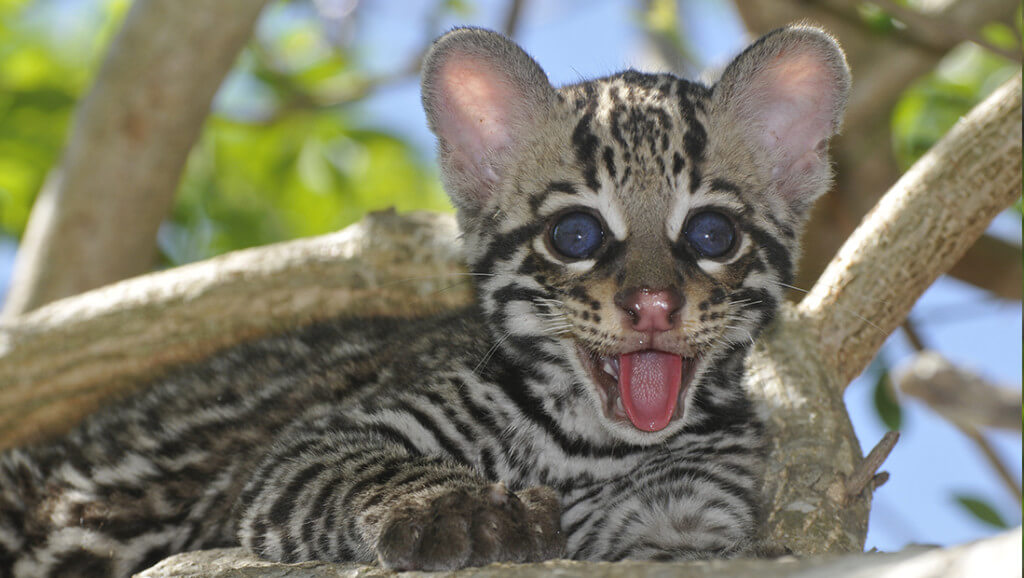The Ocelot
The Ocelot
Common name: Ocelot or manigordo.
Family: Felidae.
Species: Leopardus pardalis.
Distribution: The ocelot is found in various regions of America, from the southern United States to northern Argentina. Its distribution spans a wide range of habitats, including tropical forests, savannas, mangroves, and jungles.
Introduction
The ocelot is a medium-sized feline that captivates with the beauty of its coat and its essential role in ecosystems. Found throughout much of the Americas, it faces threats today that put its survival at risk. At the Natuwa Wildlife Sanctuary, its story serves as a reminder of the challenges of conservation.
The nocturnal guardian
A solitary and primarily nocturnal predator, the ocelot is characterized by its climbing and jumping abilities. Its diet consists of small mammals, birds, reptiles, and fish, making it a key regulator of its prey populations. Through this, it contributes directly to the balance and biological diversity of the habitats it inhabits.
Ecological role
The ocelot serves an essential function within the food chain:
Regulates prey populations.
Promotes species diversity in ecosystems.
Its presence indicates the good health of the environments it inhabits.
Its conservation is vital to maintaining the integrity of tropical ecosystems in America.
Characteristics
Size and appearance: coat ranging from yellow to brown, with rosette-shaped spots that vary in size and pattern.
Habits: solitary, nocturnal, excellent climber and jumper.
Reproduction: gestation lasts about 79 days; the female gives birth to one to three cubs, which remain dependent for the first months until they become independent around 10-12 months.
Enrichment and well-being in the sanctuary
The ocelot enclosure at Natuwa has been designed to stimulate its natural behavior. It includes:
Trees and platforms for climbing.
Spacious areas and dense vegetation.
Constant enrichment to maintain its exploration instinct.
These efforts ensure that the animal maintains a good quality of life despite not being able to return to its natural habitat.

Story of an ocelot in Natuwa: from adversity to hope
A few years ago, a small ocelot was taken from its natural habitat and kept as a pet in a household, fed with cow’s milk. The poor nutrition weakened its bones and caused fractures.
In 2014, it was confiscated by MINAE officials in Bajo Rodríguez de San Ramón and transferred to Natuwa. It arrived in fragile condition, with demineralization and severe calcium deficiencies.
Thanks to the work of the sanctuary’s team of nutritionists and experts, the ocelot managed to recover. Today, it lives in a spacious enclosure, with trees, plants, and platforms designed for environmental enrichment. Although it still faces issues in its hip and limbs, it enjoys a dignified life, with a proper diet and free from pain.
Its story reminds us of the negative effects of keeping wild animals as pets and the importance of providing them with protection and a safe future.
Conclusion
The ocelot is a symbol of the natural wealth of America and a reminder of the fragility of our ecosystems. Its conservation is essential to ensure a future in balance between wildlife and human communities.
At Natuwa, we remain committed to caring for it and for so many other species that depend on our actions to survive.